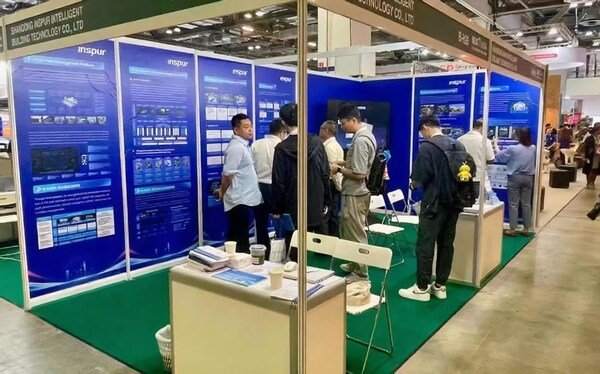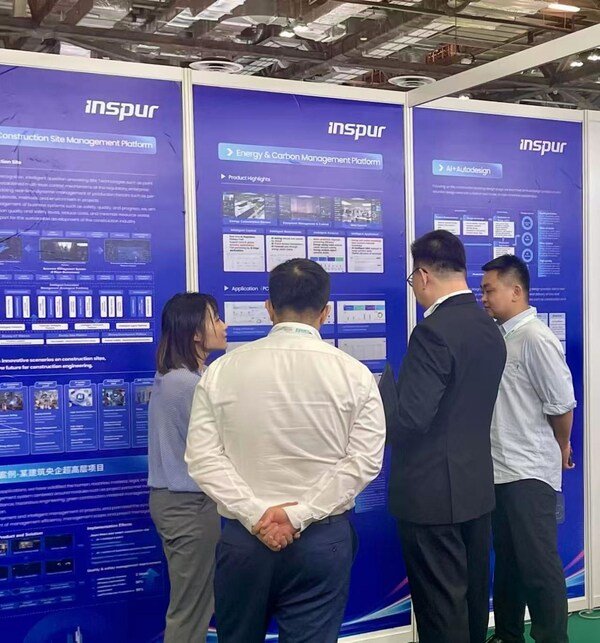Tools & Platforms
From Deepfakes To Chatbots, Terrorists Embrace AI To Spread Propaganda – Eurasia Review

Realistic-looking news anchors delivering propaganda, popular television characters singing terrorist battle songs, online chatbots that tailor their responses to a user’s interests — these are all ways terrorist groups are using artificial intelligence (AI) to spread their message and recruit.
As AI technologies have spread across the internet, they have become tools that terrorist groups such as the Islamic State group (IS) and al-Qaida use to reach out to young people in Africa and elsewhere who have grown up with the internet and get their information from social media.
Cloaking terrorist propaganda in authentic-looking content helps get the messages past social media moderators, according to Daniel Siegel, who researches digital propaganda at Columbia University’s School of International and Public Affairs.
“By embedding extremist narratives within content that mimics the tone and style of popular entertainment, these videos navigate past the usual scrutiny applied to such messages, making the ideology more accessible and attractive to a wider audience,” Siegel wrote in an analysis for the Global Network on Extremism and Technology.
Although the content often is designed to be funny, it also exploits viewers’ love for the characters to lure them into consuming more of the content without realizing they’re being indoctrinated, Siegel wrote.
“Deepfakes,” AI-generated messages that look real, are making it nearly impossible to tell fact from fiction, experts say. That undermines faith in legitimate media organizations and government institutions alike, according to researcher Lidia Bernd.
“Imagine a deepfake video depicting a political leader declaring war or a religious figure calling for violence,” Bernd wrote recently in the Georgetown Security Studies Review. “The potential for chaos and violence spurred by such content is enormous.”
Terrorist groups already use AI to create hyper-realistic fake content such as scenes of injured children or fabricated attacks designed to stoke viewers’ emotions.
By hiding terrorists’ actual human propagandists behind deepfake technology, AI undercuts facial recognition tools and hamstrings counterterrorism efforts, analyst Soumya Awasthi wrote recently for the Observer Research Foundation.
At least one group affiliated with al-Qaida has offered workshops on using AI to develop visual propaganda and a how-to guide for using chatbots to radicalize potential recruits. Chatbots and other AI technology also can generate computer code for cyberattacks, plan physical attacks and raise money through cryptocurrency.
Terrorist groups use AI to quickly produce propaganda content using video footage captured by drones on the battlefield. Those fake news videos can mirror the look of legitimate news operations such as Al Jazeera or CNN. AI-generated anchors can be tailored to resemble people from geographic regions or ethnic groups terrorists are targeting for recruitment.
IS uses such AI content as part of its “News Harvest” propaganda broadcasts. AI text-to-speech technology turns written scripts into human-sounding audio.
Counterterrorism experts say governments and social media companies need to do more to detect AI-generated content like that being created by IS and al-Qaida.
For social media companies, that can mean boosting open-source intelligence to keep up with terrorism trends. For AI companies, that can mean working with social media and government authorities to refine methods of detecting and blocking malicious use of their technology.
Terrorists’ use of AI is not without its limits. Some members of Islamist terror groups object to depicting human faces in the AI-generated images, forcing some creators to obscure the faces, lessening the impact of the video.
Terrorists also fear having AI turned against them.
Groups affiliated with al-Qaida have warned their members that security forces could use AI-generated audio to give fake commands to followers or otherwise to sow confusion and disrupt terrorist operations.
According to HumAngle, one such warning went out in Arabic via the Telegram messaging app to members of the Boko Haram splinter group Jama’atu Ansarul Muslimina fi Biladis Sudan in Nigeria.
The message, according to HumAngle, said: “New technologies have made it possible to create voices. Although they are yet to be as sophisticated as natural voices, they are getting better and can be used against Jihadists.”
Tools & Platforms
Shandong Inspur Intelligent Building Technology Showcases AI-Driven Solutions at BEX Asia 2025

SINGAPORE, Sept. 11, 2025 /PRNewswire/ — Shandong Inspur Intelligent Building Technology Co., Ltd. (“Inspur Intelligent Building”), a leading provider of smart building solutions, took center stage at BEX Asia 2025, unveiling its latest advancements in AI-powered smart building systems. Organized by leading global event management company Reed Exhibitions, the exhibition opened on September 3, 2025, at the Marina Bay Sands Expo & Convention Centre in Singapore.
As one of the largest specialized building and construction exhibitions in Southeast Asia, this year’s edition introduced an innovative “four-in-one” exhibition format, co-locating InnoBuild, MCE Asia, and Smart Cities & Building Asia. Centered around the core themes of “Productivity, Sustainability, Energy Efficiency, and Intelligence”, the integrated events brought together resources from across the construction ecosystem to build a professional platform for technology exchange, trend exploration and partnership development.
BEX Asia 2025 attracted over 3,000 global leaders, entrepreneurs, and policymakers across more than 150 exhibition booths. During the event, industry frontrunners expressed strong interest in fostering dialogue on innovation and accelerating the transition to a more sustainable and connected built environment. As a leader in smart building transformation, Inspur Intelligent Building showcased its latest breakthroughs and real-world applications in the integration of artificial intelligence and building technologies, offering scalable, future-ready solutions for developers, owners, and operators.
At the exhibition, Inspur Intelligent Building showcased its integrated applications of AI across the building lifecycle:
- Modular Building Systems: Combining efficient prefabrication, flexible assembly, and intelligent adaptation to deliver cost-effective residential and commercial spaces, reinforcing competitiveness in global markets and the company’s commitment to sustainable building practices;
- AI-Enhanced Design Automation: Enabling human-machine collaboration to standardize and streamline construction design processes;
- Intelligent Site Management Platform: Incorporating AI-powered image recognition, advanced query tools, building information modeling (BIM), and point-cloud imaging to enable real-time project monitoring and precision management of project resources;
- Smart Living Solutions: Delivering a unified IoT platform for whole-home connectivity and intelligent automation, enhanced by large AI models to create personalized occupant experiences;
- Sustainable Building Technologies: Offering a cloud-edge product suite including AI-driven energy optimization, energy and carbon management platforms, and AI edge workstations, designed to help clients reduce energy use and carbon footprint.
Throughout the exhibition, visitors from Singapore, Europe, Southeast Asia and other global markets engaged with Inspur Intelligent Building’s technical team to explore its comprehensive portfolio for AI-assisted design, green building systems, energy and carbon management platforms, smart campus and industrial park systems, intelligent construction sites, and prefabricated steel structures. Live demonstrations and case studies illustrated the company’s engineering expertise and real-world applications, earning positive recognition from industry partners.
This first appearance at BEX Asia 2025 marked an important milestone in Inspur Intelligent Building’s international expansion and opened new growth opportunities in Southeast Asia. Looking ahead, the company plans to continue investing in R&D for AI-enabled smart building technologies, grow its solution ecosystem, and accelerate international growth—supporting the digital, intelligent, and sustainable transformation of the built environment worldwide.
Source: Shandong Inspur Intelligent Building Technology Co., LTD.
Tools & Platforms
China Telecom Global Shines at the 10th Belt and Road Summit, Empowering the New Silk Road via AI for Good
HONG KONG, Sept. 10, 2025 /PRNewswire/ — From September 10 to 11, 2025, the 10th Belt and Road Summit was successfully held at the Hong Kong Convention and Exhibition Centre. China Telecom Global (CTG) participated prominently under the theme “Empowering the New Silk Road via AI for Good,” highlighting three core areas: the OneGrowth Global Partnership Initiative, AI global capabilities, and AI-driven applications. Through multiple benchmark cases, interactive scenarios, and physical displays, the exhibition systematically presented China Telecom’s cloud-network-intelligence-computing resource deployment and innovative AI applications along the Belt and Road, fully demonstrating its comprehensive strength and firm commitment to promoting regional collaborative development through digital technologies.
On the first day of the event, Ms. Wu Ting, AI Director of China Telecom Global, delivered a keynote speech titled “China Telecom Global: AI Blueprint and Capabilities”. She comprehensively presented CTG’s AI capabilities and architectural framework, highlighting a series of innovative achievements and practical applications in artificial intelligence. These included several cutting-edge AI products such as the OneTouch AI Engine, LLM Guardrail Platform, Enterprise No Code Agent Platform, and more, demonstrating CTG’s leading strength in artificial intelligence research and development and industrial application. Additionally, leveraging multiple demonstrated cases, she provided in-depth insights into CTG’s competitive advantages in building international digital infrastructure and delivering intelligent solutions for enterprises expanding globally.
At the summit, CTG featured a range of interactive highlights centered on its OneGrowth Global Partnership Initiative and global AI capabilities, comprehensively demonstrating its strength in AI+ technologies and ecosystem collaboration.
Empowering AI, Intergrow as One: Co-creating a New Digital Ecosystem
In the ” OneGrowth Global Cooperation Initiative” section, CTG highlighted its recently launched cooperation plan with a focus on three key ecological directions: AI+ Intelligent Empowerment, AI+ Comprehensive Mobile Global Cooperation, and AI+ Innovative Business, all guided by the four core principles of co-creation, sharing, co-governance, and win-win. The AI+ Intelligent Empowerment initiative is developing a global ecosystem computing power scheduling platform that integrates intelligent and general computing services while collaborating with partners to build scenario-based digital enablement platforms. The AI + Comprehensive Mobile Global Cooperation leverages a multidimensional mobile network covering “land-sea-air-space,” promoting cooperation in 5G, satellite communications, and Internet of Vehicles (IoV). Meanwhile, AI+ Innovative Business featured collaborations in visual network, exemplified by the transnational SeeLink Global Platform, which integrates AI algorithms, devices, cloud services, and applications to provide end-to-end solutions tailored to diverse customer needs.
Application in Action, Leadership in Intelligence, Interactive Demos Showcasing Technological Strength
In the “AI Global Capabilities” section, beyond showcasing its global digital infrastructure, the exhibit provided a clear overview of its resource network—including 53 submarine cables, 251 international PoPs (Points-of-Presence), and 15 overseas data centers. It also highlighted the capabilities and advantages of two major computing power engines: the AI data centers in Tseung Kwan O, Hong Kong, China and Jakarta, Indonesia. These demonstrate CTG’s core strength in reinforcing the foundation of the “Digital Silk Road” and supporting regional enterprises through digital transformation.
CTG prominently spotlighted its AI solutions and benchmark cases, including 5GC scenario applications and low-altitude economy service system. Through global applications such as supporting Chinese automotive companies expanding into Europe and assisting game developers in global operations, CTG demonstrated its deep practical achievements across Belt and Road markets. These cases underscore the company’ leading strength in driving industrial digital transformation and facilitating the global expansion of services.
Meanwhile, at the AI interactive experience and physical exhibition zone, CTG featured engaging activities such as AI-powered opera face-changing, a 5GC-enabled robotic dog, and the Tianshu drone. By seamlessly integrating traditional culture with cutting-edge artificial intelligence, CTG vividly demonstrated its innovative capabilities and technological expertise in cutting-edge fields such as 5G, AI, the Internet of Things, and the low-altitude economy. The interactive displays attracted extensive on-site participation and drew significant audience engagement.
During the summit, CTG engaged in on-site discussions with customers and partners from around the world to explore new opportunities within the Belt and Road digital economy. Moving forward, CTG will continue to leverage its strengths in cloud-network resources, AI technologies, and global services to provide efficient and reliable digital solutions for countries and regions along the route, further advancing the development of the “Digital Silk Road” to new heights.
Through its participation, CTG has fully demonstrated its capabilities as a world-class provider of digital-intelligent technology services in resource integration, technological innovation, and ecosystem influence. This exhibition underscored the company’s firm commitment to empowering high-quality development along the Belt and Road and co-creating a smart future through technological innovation.
SOURCE China Telecom Global

Tools & Platforms
ePlus Subsidiary OneCloud Acquires Realwave to Expand AI-Driven Data & Video Analytics

ePlus announced that its subsidiary, OneCloud Consulting, has acquired substantially all of the operating assets of Realwave, a software company offering cloud-based, AI-powered, automated data analysis that can integrate with data sources, including video or point-of-sale systems, Internet of Things (IoT) devices, sensors, digital locks and more.
The acquired assets strengthen ePlus’ growing portfolio of AI-enabled, data and deep learning solutions and services, expanding its ability to serve customers with AI-powered technologies.
By merging cameras and IoT capabilities with other sensor data, Realwave can automatically detect events, make decisions, and trigger business process automation without human intervention.
The incorporation of automated and intelligent data and video capabilities opens up a wide range of ePlus supported AI-based applications for customer organizations across retail, transportation, healthcare, financial, campus environments and more. The Realwave platform pulls information from a variety of data sources, translates it into a common format, and then combines the data to produce actionable insights. Bringing this level of real-time, practical data analysis to our customers demonstrates our commitment to continuing to build out our capabilities.
Ken Farber, President of ePlus Software
This transaction is consistent with our defined strategy of making targeted investments that help fuel our growth through expansion and enhancement of our technology solutions and services. Building our capabilities, especially around growing areas such as AI, cybersecurity, data center technology and consulting and managed services will help us continue to provide our customers with the support, engagement and service excellence they expect from ePlus in a rapidly changing landscape
-

 Business2 weeks ago
Business2 weeks agoThe Guardian view on Trump and the Fed: independence is no substitute for accountability | Editorial
-
Tools & Platforms4 weeks ago
Building Trust in Military AI Starts with Opening the Black Box – War on the Rocks
-

 Ethics & Policy2 months ago
Ethics & Policy2 months agoSDAIA Supports Saudi Arabia’s Leadership in Shaping Global AI Ethics, Policy, and Research – وكالة الأنباء السعودية
-

 Events & Conferences4 months ago
Events & Conferences4 months agoJourney to 1000 models: Scaling Instagram’s recommendation system
-

 Jobs & Careers2 months ago
Jobs & Careers2 months agoMumbai-based Perplexity Alternative Has 60k+ Users Without Funding
-

 Education2 months ago
Education2 months agoMacron says UK and France have duty to tackle illegal migration ‘with humanity, solidarity and firmness’ – UK politics live | Politics
-

 Education2 months ago
Education2 months agoVEX Robotics launches AI-powered classroom robotics system
-

 Podcasts & Talks2 months ago
Podcasts & Talks2 months agoHappy 4th of July! 🎆 Made with Veo 3 in Gemini
-

 Funding & Business2 months ago
Funding & Business2 months agoKayak and Expedia race to build AI travel agents that turn social posts into itineraries
-

 Podcasts & Talks2 months ago
Podcasts & Talks2 months agoOpenAI 🤝 @teamganassi


